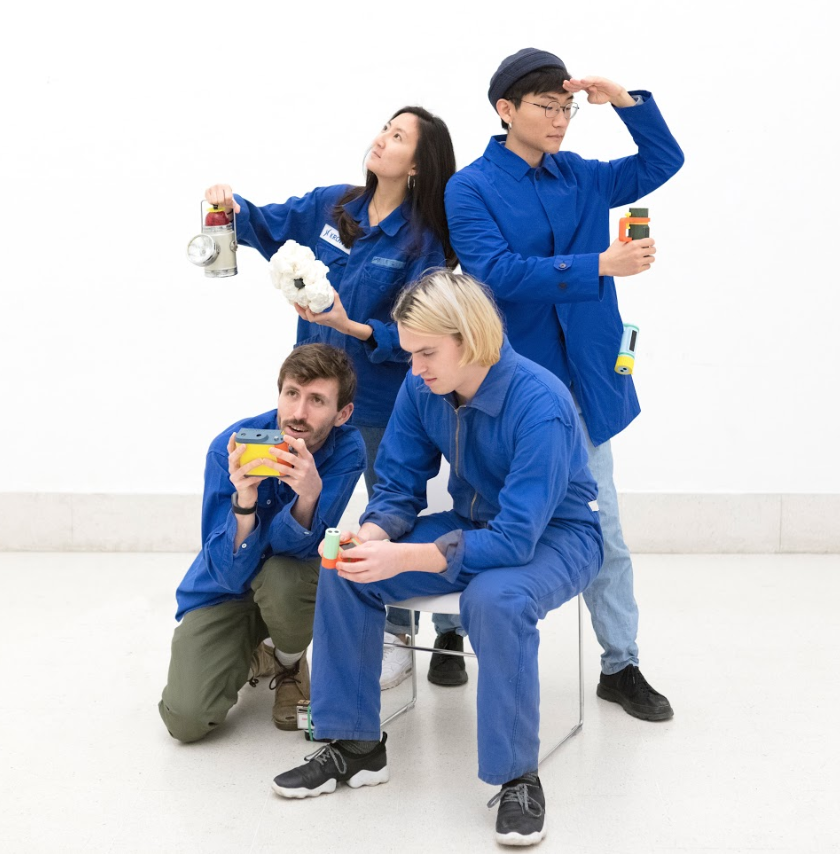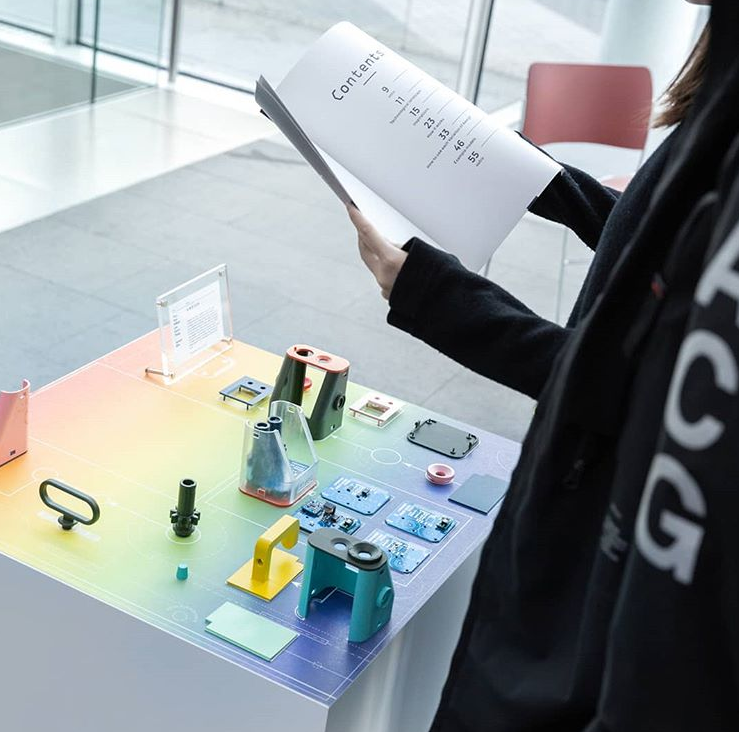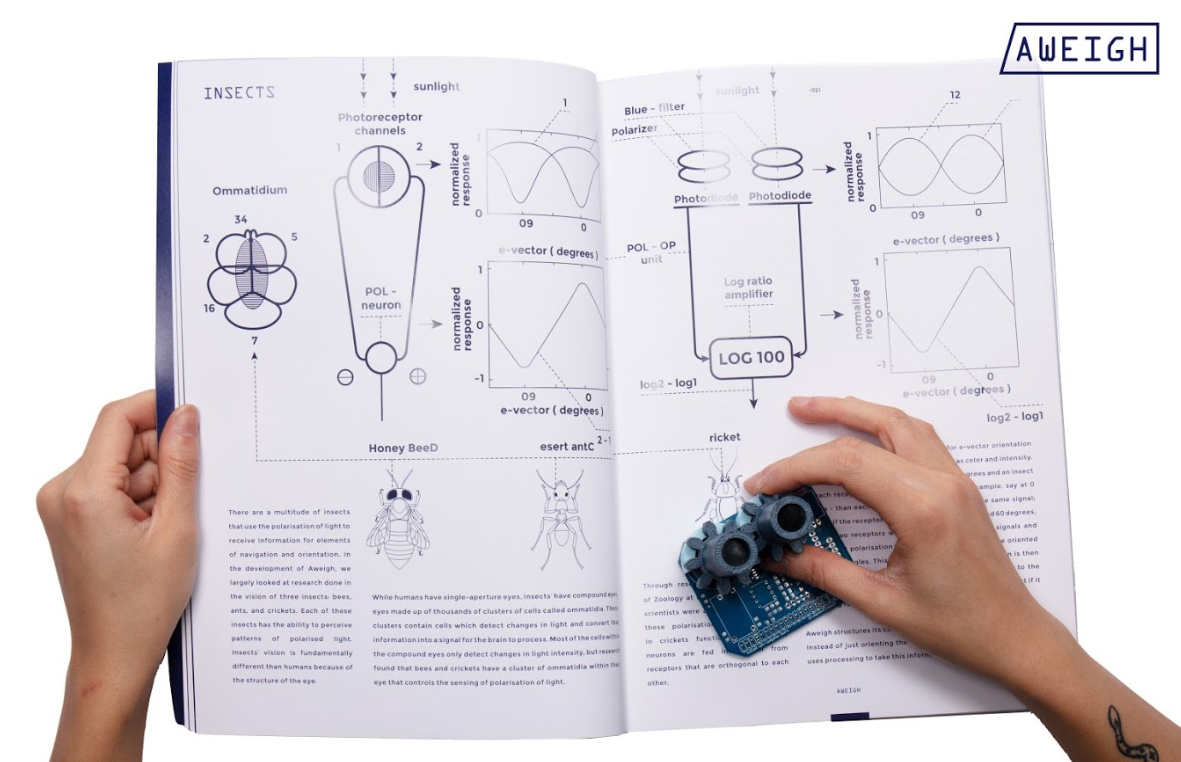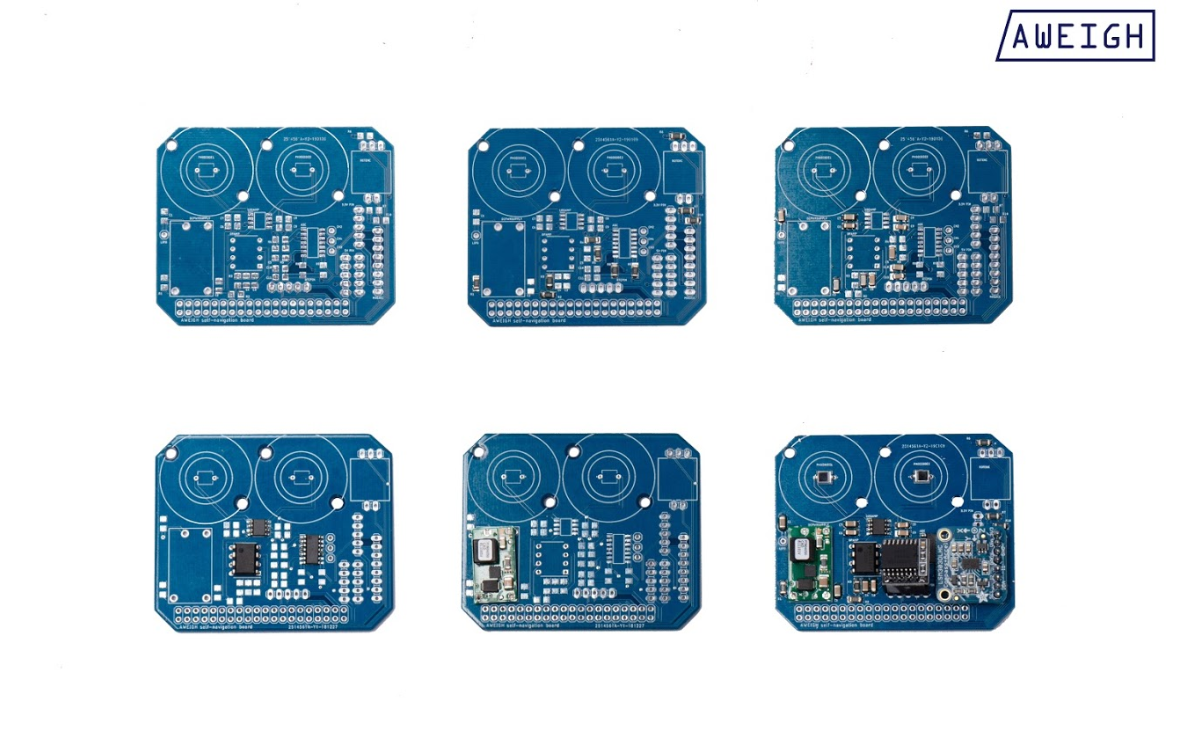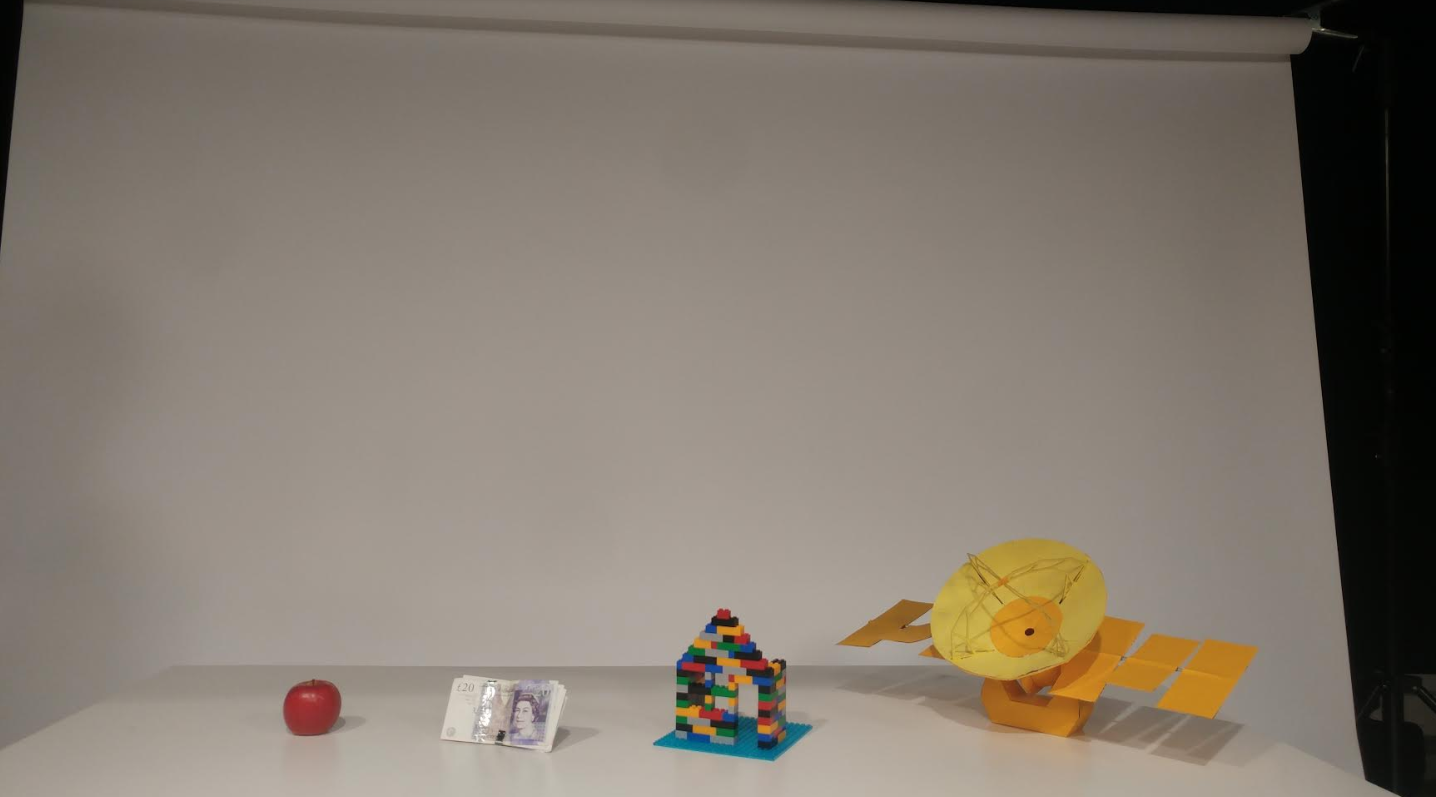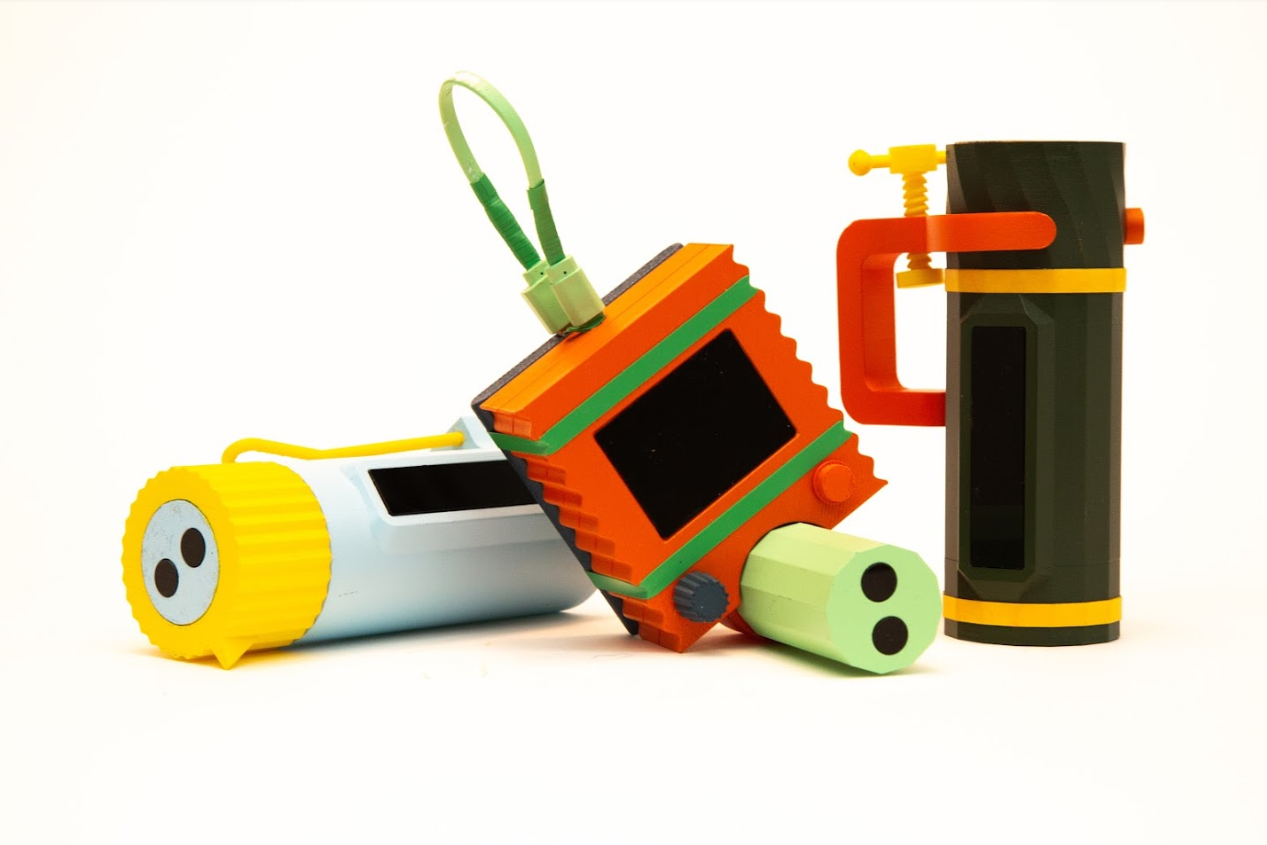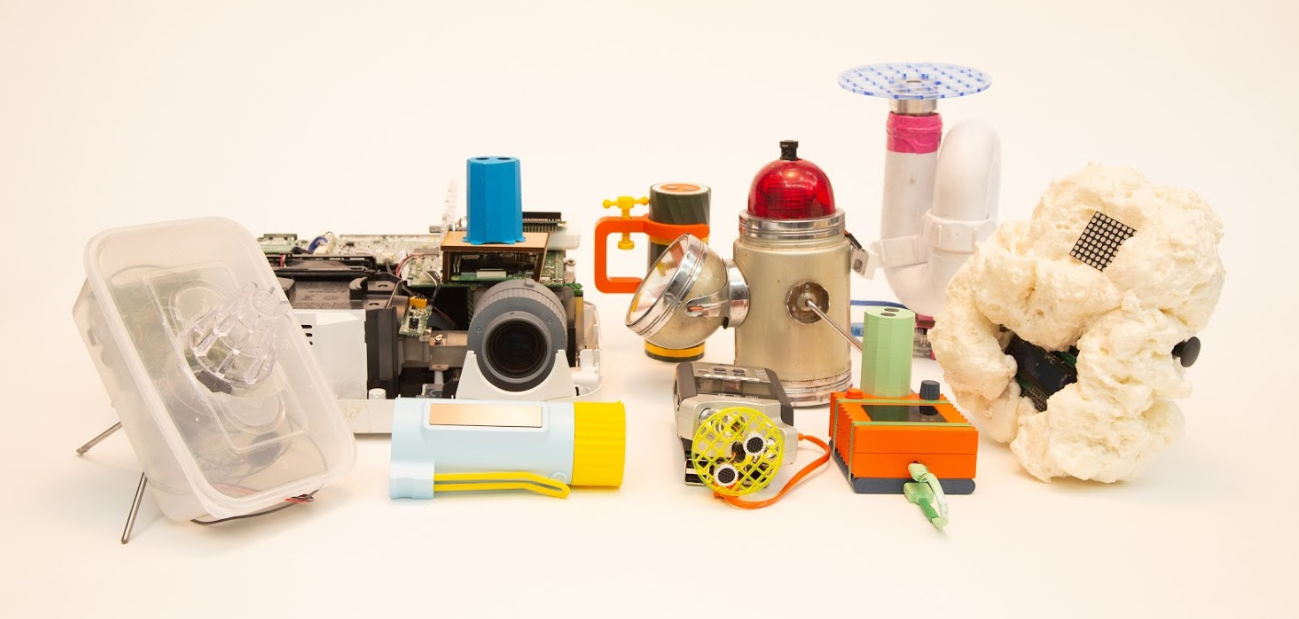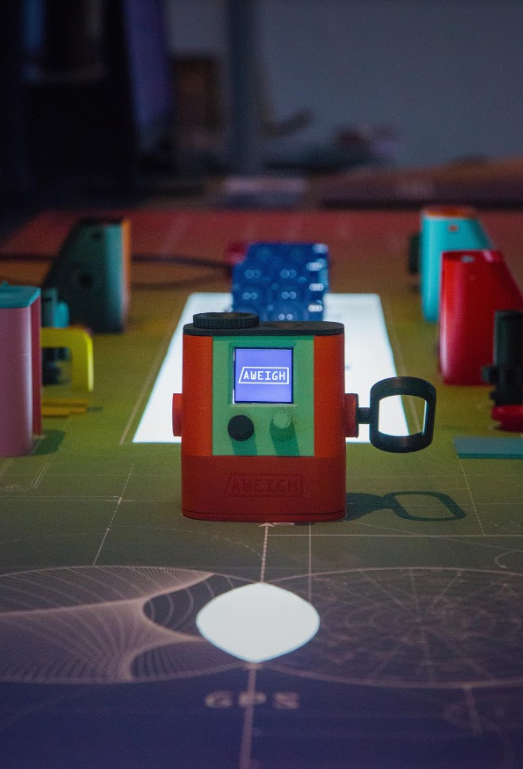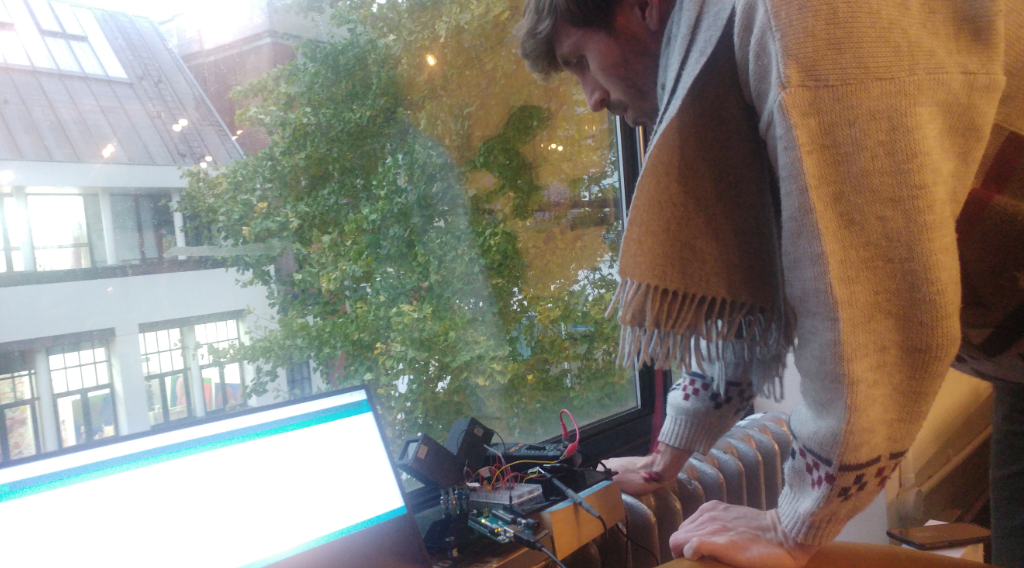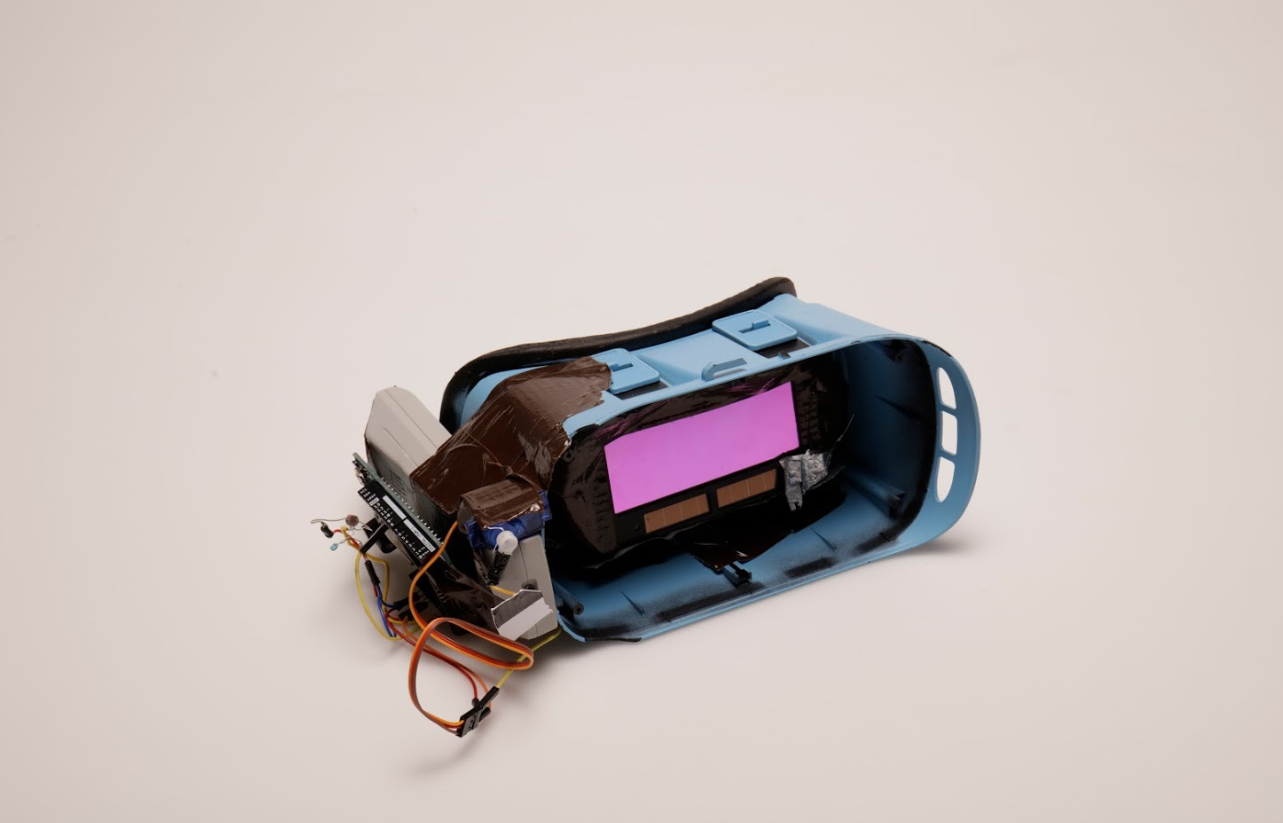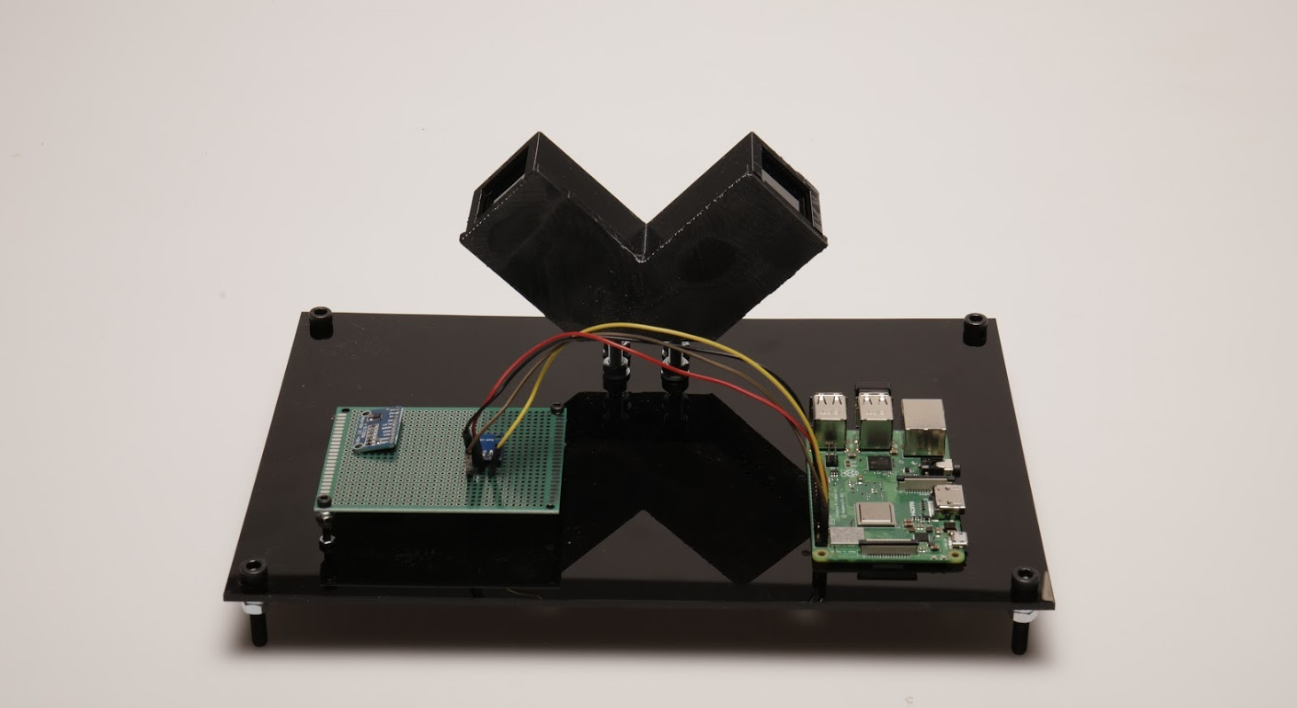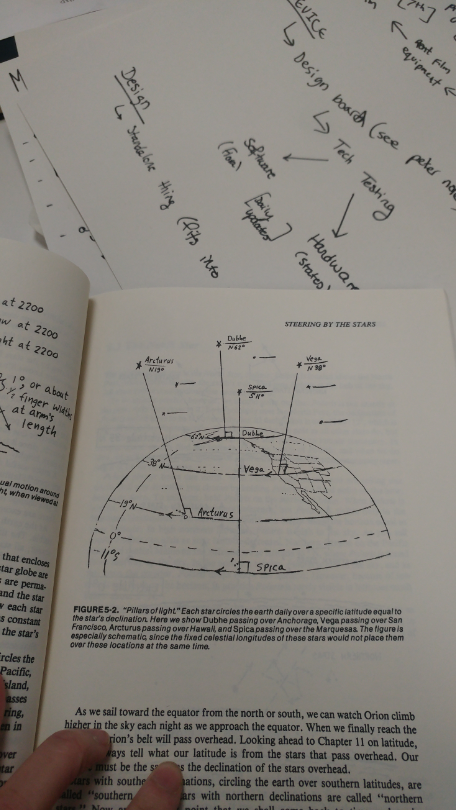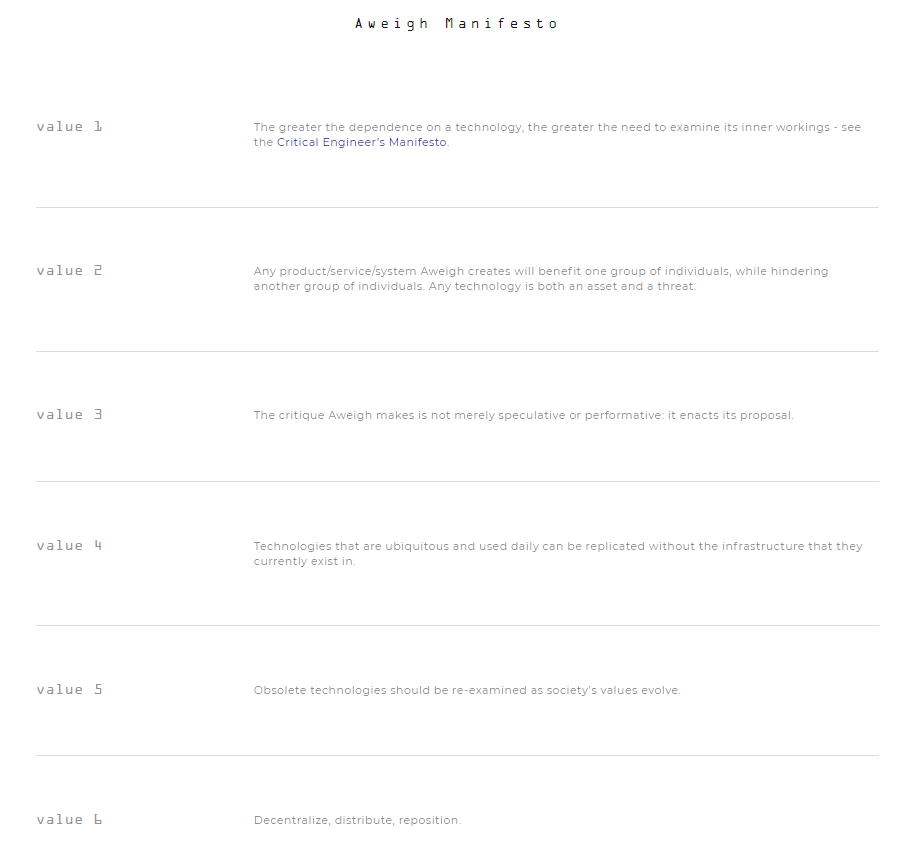-
Fundraising & further developments: June - July 2019
08/24/2019 at 19:50 • 0 commentsThe team continues to search for funding opportunities as it hopes to have the resources to properly test and develop the project assets. Through exhibitions at the V&A and Dutch Design Week, the group hopes to connect with the public and show the value of the project.
-
Public outreach: March - May 2019
08/24/2019 at 19:41 • 0 commentsThe team receives a significant amount of public interest after the work in progress show and decides to carry out more public outreach. Aweigh is published in a number of articles including Dezeen and CreativeApplications. The team starts to look for additional exhibition and publication opportunities, with the goal of gathering interest from those able to help the project both financially and technically. The project is ultimately both a technology and a methodology, which the group hopes to present as a handy self-help kit for framing more democratic technological futures.
-
Refinement : February 2019
08/24/2019 at 19:16 • 0 commentsThe project assets are refined and improved. These include the Aweigh manual, as well as technical software and hardware parts. The website is made public for everyone to follow project updates and access resources.
-
User, Interaction, Product Design: January 2019
08/24/2019 at 18:20 • 0 commentsThe Aweigh team organises a workshop to validate public interest and potential users, trying to understand the aspects of the project that might be interesting to people and which parts needed improvement. This workshop was a collaboration with the Anarchist Federation of London. Meanwhile, the team also creates a short film to illustrate the big picture problems they are trying to address. The video includes abstract depictions of modern dependencies and a simplified representation of satellite networks. It shows potential applications for the Aweigh decentralised navigation system and portrays three different types of users. The team also develops a custom PCB, condensing all components onto one board. Various designs of the device are produced concurrently.
These steps of the project are then used to prepare a work in progress show, in which Aweigh's development and existing outputs are displayed for visitors to interact with and comment on. Discussions on the democratization of technology during this show helped the team get feedback and raise interest about the project.
-
R&D : November - December 2018
08/24/2019 at 17:57 • 0 commentsThe team spends the month researching various methods of navigation - from insect navigation to off-grid celestial navigation. They read books, spoke with experts, designed simple prototypes and experiments to validate early ideas. Throughout their findings they were particularly interested playing with light, a powerful and universal resource - which not only reveals the visible world, but also often contains layered useful information. The team designs a test rig, continues to carry out experiments, and refines the idea of using properties of light to navigate. A huge inspiration came from findings from papers about biomimetic robots and light-based navigation research. Through several iterations of research and development, the team is closer to a technical prototype, but is at this stage still missing the user interaction and design aspects of their project.
-
Focus - Navigation: October 2018
08/24/2019 at 16:15 • 0 commentsAfter examining multiple directions, the group focuses on navigation as a topic of interest. Navigation is a stark example of modern reliance on a centralised and black-boxed technology: GPS satellites. These satellites are owned by a few nations in the world, largely the U.S., China, & Russia. The political challenges and dynamics of the world, which we often have no agency in, can often determine our access and interaction with everyday technologies.
-
Project Start: September, 2018
08/24/2019 at 16:04 • 0 commentsThe project begins with four designers and engineers - Sam Iliffe, States Lee, Flora Weil, & Keren Zhang - coming together to form a brief to respond to as a team: creating alternatives to everyday technologies seen as blackboxed and centralised, as disempowering individuals. The group identified success criteria, methodology, and wrote a manifesto.
 aweigh
aweigh